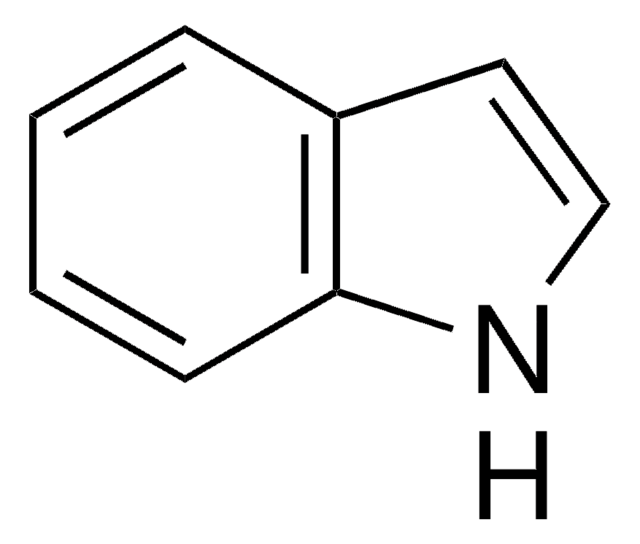220027
3-Indolepropionic acid
ReagentPlus®, 99%
Synonym(s):
3-(3-Indolyl)propanoic acid, IPA, Indole-3-propionic acid, NSC 3252, NSC 47831
About This Item
Recommended Products
product line
ReagentPlus®
assay
99%
form
powder
mp
134-135 °C (lit.)
solubility
ethanol: soluble 50 mg/mL, clear, yellow to orange
functional group
carboxylic acid
SMILES string
OC(=O)CCc1c[nH]c2ccccc12
InChI
1S/C11H11NO2/c13-11(14)6-5-8-7-12-10-4-2-1-3-9(8)10/h1-4,7,12H,5-6H2,(H,13,14)
InChI key
GOLXRNDWAUTYKT-UHFFFAOYSA-N
Looking for similar products? Visit Product Comparison Guide
General description
Application
- Fluorescent analogues of strigolactones
- Anti-tumor agents
- Melanocortin receptors ligands
- Immunosuppressive agents
- Iinhibitors of hepatitis C virus
- Histamine H4 receptor agonists
- NR2B/NMDA receptor antagonists
- CB1 Antagonist for the treatment of obesity
- Antibacterial agents
- Inhibitor of TGF-β receptor binding
Legal Information
Storage Class
11 - Combustible Solids
wgk_germany
WGK 3
flash_point_f
Not applicable
flash_point_c
Not applicable
ppe
Eyeshields, Gloves, type N95 (US)
Choose from one of the most recent versions:
Already Own This Product?
Find documentation for the products that you have recently purchased in the Document Library.
Customers Also Viewed
Our team of scientists has experience in all areas of research including Life Science, Material Science, Chemical Synthesis, Chromatography, Analytical and many others.
Contact Technical Service






